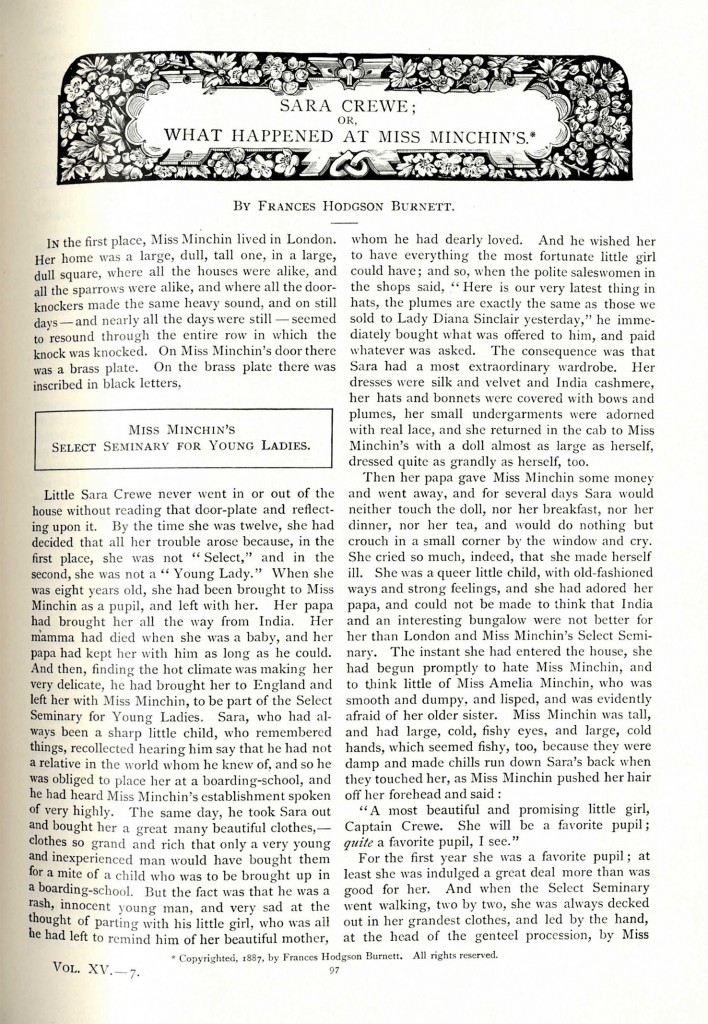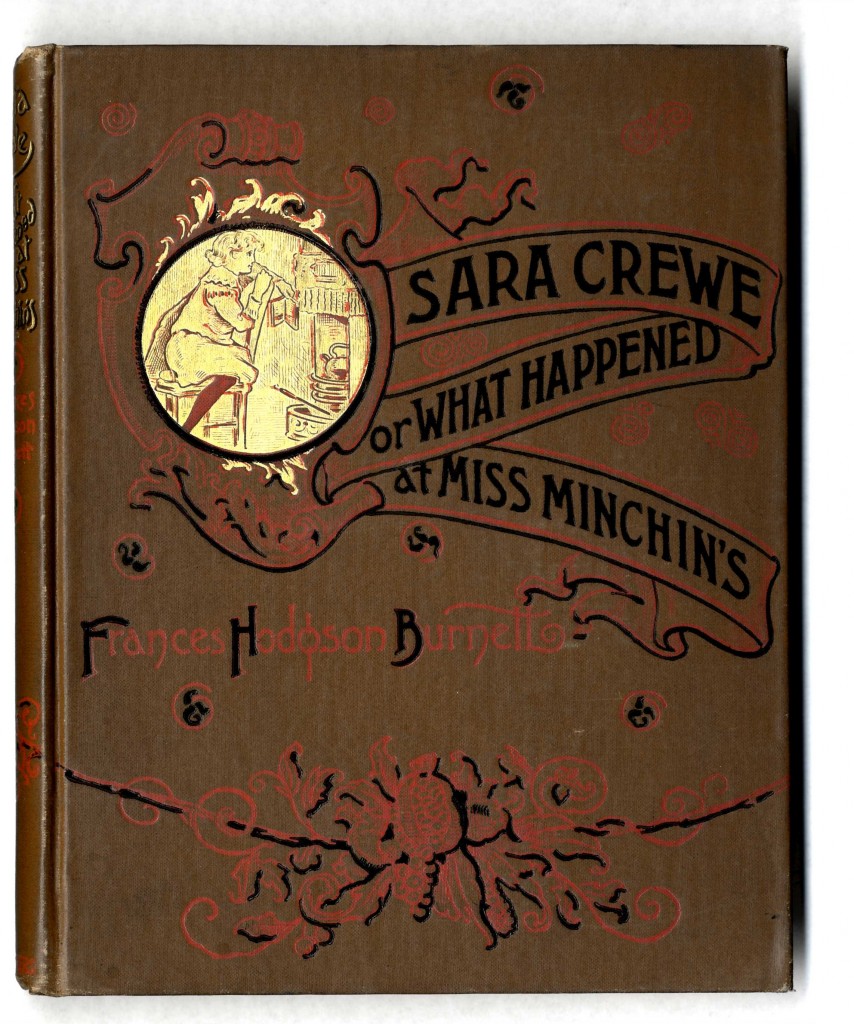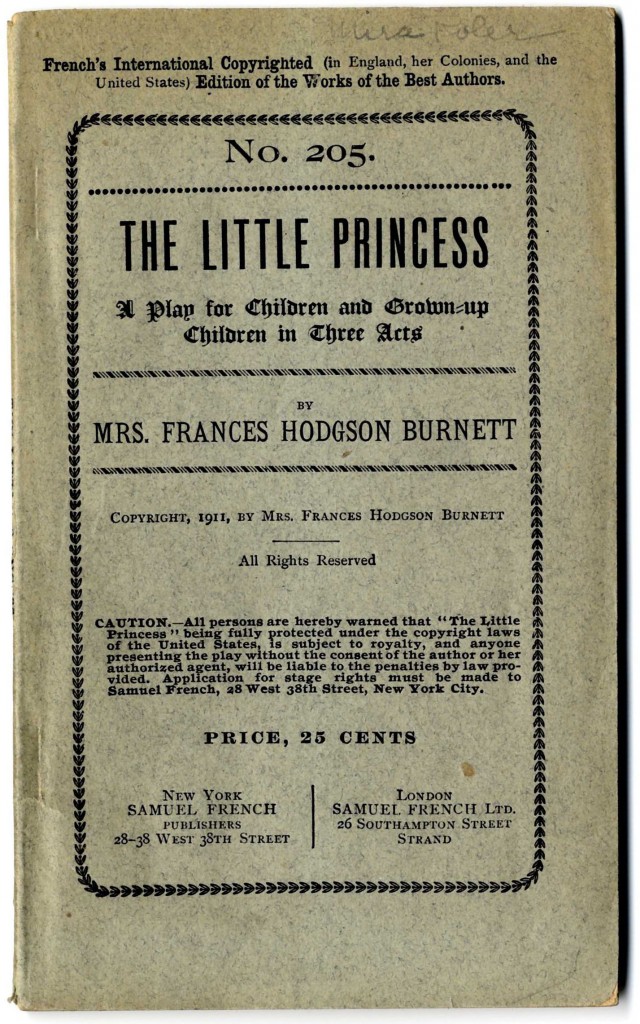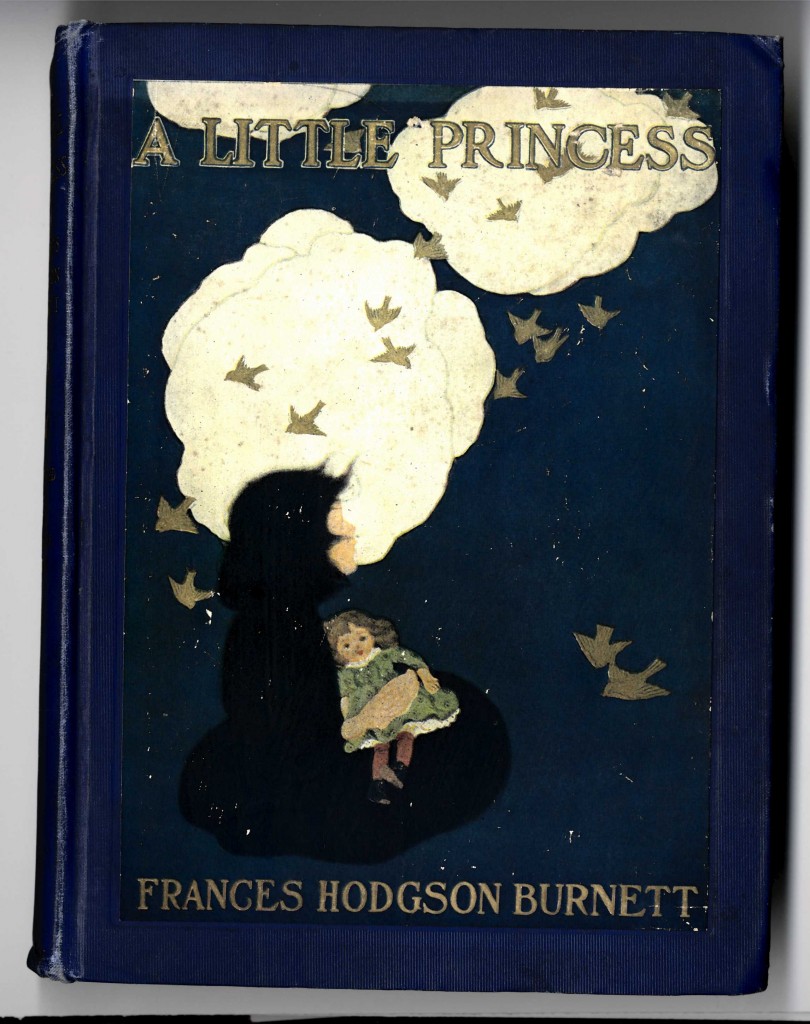Editor’s note: In the most recent issue of the Almanac, we asked members of the AAS community to give us their choice of recommended reading for “fiction published before 1900,” a series we are continuing here on Past is Present. Last week we heard from AAS member Philip Gura. This week, Jackie Penny, AAS’s image rights and design librarian, has two very good (and very adorable) reasons for her choice.

At home, my children and I read what we colloquially refer to as the Big Book before bed – a text (usually fiction) of modest novel/novella length. Anything else (of the 32-page with-picture variety) is just A Book. So while scouting for new Big Book material lately, I was taken with the Almanac’s challenge of finding something to read and recommend published before 1900. My requirements were that it needed to be something that I could find in AAS’s first edition collection, that it had been reissued, and that it could lull a pair of three-year-olds to sleep. When I asked my daughter for her thoughts, like most girls born after 2007, she suggested something to do with a “princess.” Undoubtedly, she wanted something closer to the garish strain which is represented in everything from bandages to ghostwritten paperbacks; I resisted at first (but admit, she was on to something).

The book we settled on was Frances Hodgson Burnett’s (1849-1924) A Little Princess, a story that first appeared serialized in St. Nicholas: An Illustrated Magazine for Young Folk as “Sara Crewe, or What Happened at Miss Minchin’s” starting in 1887 (AAS holds a copy of this periodical). By 1888, Sara Crewe was published in New York by C. Scribner’s Sons (and in London by Warne) as a bound volume (AAS has two copies of this edition). In the early twentieth century, the familiar tale was issued as a stage play, A Little Princess (which AAS has a circa 1911 paperbound copy of). Finally, in 1905 the now-famous text appeared in its full-length iteration A Little Princess, which it is most known for today.

So why is this important? And why is it significant that AAS has several expressions of Sara Crewe’s story (as play, serial, compiled serial/novella, and revised version)? Apart from trying my hardest to raise a future generation of librarians fluent in bibliographic description, I believe the text (and publishing history) is valuable not only because it remains a hallmark of my own childhood reading, but it underscores what I believe are progressive markers of a true princess: to be intelligent, kind, strong, positive, imaginative, and have the ability to remain clever and creative even in the most grim of circumstances (a sudden fall in fortune and being orphaned in another country, for example).

The publishing history is textured, rich, and arguably pretty common among practices of the late nineteenth and early twentieth centuries. And yet, Burnett’s story of Crewe is complicated to say the least. I recommend it because I feel by reading (and re-reading) this perennial favorite, we are looking to the past for reminders and cues on how to act today; these stories aren’t frozen, archaic, or outdated, but reflect our own complex lives.

One thought on “Recommended Reading: Burnett’s A Little Princess”